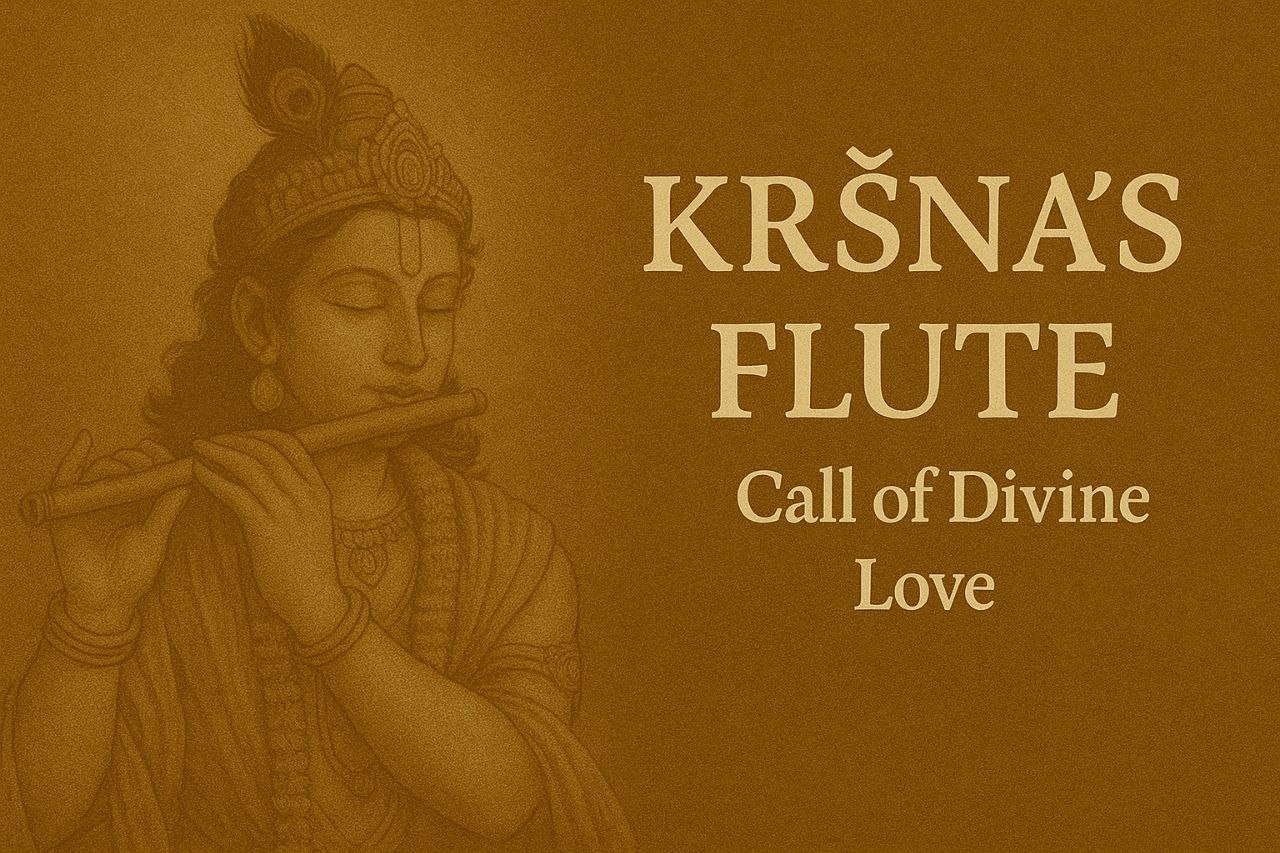Krishna’s Flute and the Spiritual Meaning of Divine Love

The flute in the hands of Bhagavān Kṛṣṇa is not just a musical instrument; it is a spiritual metaphor that reverberates across the ages. In the Sanatan tradition, Kṛṣṇa’s flute holds profound meaning, embodying love, longing, liberation, and divine union. It is said to be so powerful that its notes attract not just humans and animals, but even inert objects and celestial beings. Why does a mere bamboo stick stir the cosmos? The answer lies not in the instrument, but in the hands that play it.
“Where the melody of Kṛṣṇa’s flute flows, ego dissolves, and the soul dances in remembrance.” ~ Adarsh Singh
The Flute as a Symbol of the Empty Ego
The flute is hollow, devoid of any obstruction. This emptiness is symbolic. It teaches the aspirant the essence of surrender. Only when we become hollow like the flute, empty of ego, desires, and resistance, can the Divine breathe through us.
In Bhakti Yoga, this is the highest goal: to let the Lord play through your life, just as He plays the flute, making divine music out of a seemingly simple existence.
"The flute whispers: 'Become empty of pride, and the Divine will make you sing.'" ~ Adarsh Singh
Radha and the Call of Love
When Kṛṣṇa played His flute, it was Radha who heard it first. In Sanatan lore, the flute's call is symbolic of the ātman’s recognition of the Paramātman. Radha represents the soul in its most awakened state, completely surrendered, fully longing, deeply in love. Her response to the flute is the soul’s ecstatic answer to the divine call.
This cosmic love story isn’t external. It’s the tale of every soul who hears the inner melody, the nāda, and moves towards the Divine Beloved.
The Vṛndāvana Vibration
The resonance of the flute in Vṛndāvana did what no scripture could, unify hearts in devotion. Cows stopped grazing, rivers reversed flow, and sages forgot their austerities. The Bhāgavatam sings that trees blossomed out of season, and the gopīs left all duties upon hearing the sound.
This is no exaggeration. It is a poetic truth. The Divine calls us all, but only those with the ears of Bhakti can hear it.
"In the silence between breaths, the flute of Kṛṣṇa calls us home." ~ Adarsh Singh
Why the Flute, Not a Veena or Drum?
The flute is simple, natural, and unadorned, qualities that Sanatan Dharma regards as divine. Unlike the veena or drum that require cords or membranes, the flute is pure air transformed into vibration. This symbolizes the prāṇa, the vital breath, turning into divine sound (nāda brahma).
Kṛṣṇa’s choice of the flute shows the path of simplicity, surrender, and grace over rigid asceticism or mechanical ritualism.
The Flute and the Human Spine
In Yogic symbolism, the human spine is often likened to a bamboo stick with chakras as its holes. When energy (kundalinī) rises and breath (prāṇa) flows freely, divine music (higher consciousness) emerges. Kṛṣṇa’s flute is an outward metaphor for this inward transformation.
The Ultimate Message
The flute does not sing on its own, it waits for the Divine touch. Likewise, the soul without divine grace is silent. When surrendered, it becomes a channel of eternal music.
"The Divine doesn’t speak in words. It plays through us, like Kṛṣṇa through His flute." ~ Adarsh Singh
The call of Kṛṣṇa’s flute is still echoing, not in the forests of Vṛndāvana alone, but in the inner sanctum of every seeker’s heart. To hear it is to be awakened. To follow it is to be liberated. And to become it is to dissolve into the eternal dance of Divine Love.
Fri Jul 25, 2025
